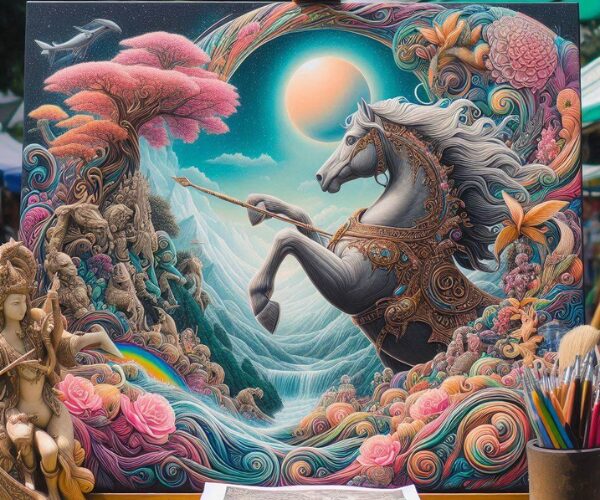The Collectible Value of Outdoor Art is a multifaceted concept that interweaves aesthetics, cultural significance, and investment potential. As more individuals and communities recognize the transformative power of art in public spaces, outdoor art has begun to emerge as a viable collectible asset. This blog post delves into the layers of value associated with outdoor art, exploring its implications for collectors, investors, and the broader community.
The Intrinsic Worth of Outdoor Art
The intrinsic worth of outdoor art extends beyond mere visual appeal. It embodies cultural narratives and historical contexts that resonate with viewers on a personal level. Collectors often seek works that evoke strong emotional responses or reflect the zeitgeist of a particular era.
Cultural Significance
The cultural significance of outdoor art cannot be overstated. Many pieces serve as historical markers, representing pivotal moments or movements within a community. They can encapsulate local lore, celebrate diversity, or provoke critical conversations around social issues. As such, their value is not strictly financial; instead, it is deeply rooted in the narratives they convey.
Emotional Resonance
Emotional resonance plays a crucial role in the collectible value of outdoor art. When a piece speaks to an individual’s personal experiences or aspirations, it creates a bond that transcends its physical presence. Collectors often gravitate toward works that invoke nostalgia, joy, or contemplation, recognizing that these feelings can elevate the artwork’s significance over time.
The Financial Implications of Collecting Outdoor Art
The financial implications associated with collecting outdoor art are increasingly becoming a focal point for investors and enthusiasts alike. As the market for outdoor sculptures, murals, and installations expands, understanding the potential for appreciation is vital.
Market Trends
Market trends indicate a growing interest in outdoor art as a collectible asset. This shift is fueled by urban development initiatives that prioritize public art installations. Municipalities are investing in art to enhance community spaces, driving demand for both established and emerging artists. Collectors who stay attuned to these trends can identify opportunities for investment and can often predict which artists or styles may gain prominence.
Investment Potential
The investment potential of outdoor art is particularly intriguing. Unlike traditional art forms that are confined to galleries, outdoor art is accessible to a broader audience, which can enhance its visibility and desirability. As cities continue to embrace public art as a means of enhancing community identity, the value of significant pieces is likely to appreciate. Savvy collectors recognize that acquiring notable works early on can yield substantial returns as the artist’s reputation grows.
The Community Impact of Outdoor Art
The impact of outdoor art on communities cannot be overlooked. It serves as a catalyst for social engagement, beautifies public spaces, and fosters a sense of belonging among residents. Collectors and artists alike must recognize their role in this ecosystem.
Fostering Community Identity
Fostering community identity is one of the most compelling reasons to invest in outdoor art. Public art can reflect the unique character of a neighborhood, making it a point of pride for residents. This sense of identity can strengthen community bonds and encourage local participation in cultural initiatives. Collectors who support artists that reflect local values contribute to this sense of belonging and help to preserve cultural heritage.
Encouraging Public Dialogue
Encouraging public dialogue is another crucial aspect of outdoor art. Many pieces are designed to provoke thought and discussion, addressing social issues or challenging norms. By placing art in public spaces, collectors and municipalities invite diverse perspectives and foster discourse among community members. This dialogue can lead to greater awareness and understanding, enriching the community’s cultural fabric.
In conclusion, the collectible value of outdoor art encompasses both intrinsic and financial dimensions. Its cultural significance and emotional resonance create a rich tapestry of meaning, while market trends and investment potential highlight its viability as an asset. Ultimately, outdoor art serves as a powerful vehicle for community engagement and identity, making it an invaluable aspect of our shared public spaces. Collectors, artists, and communities must work in tandem to nurture this vibrant art form, ensuring its continued relevance and impact for generations to come.
